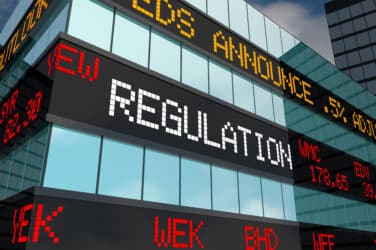
The opening brief challenging the new rule adopted by the U.S. Securities and Exchange Commission (SEC) redefining which financial firms must register as a dealer was filed in the U.S. District Court of the Northern District of Texas. Gibson, Dunn & Crutcher LLP filed the brief on behalf of the National Association of Private Fund Managers, MFA, and the Alternative Investment Management Association. The brief can be found here.
The brief emphasizes that the Dealer Rule is so overbroad and without any limiting principle that it clearly goes beyond what Congress intended.
The Rule is so overbroad, so lacking any limiting principle, and so “clearly a misreading of the statute,” that, by the SEC’s own admission, it would mean that everyone from a mutual fund to the Federal Reserve Bank of New York has, under the SEC’s supervision, been operating as an unregistered “dealer”— a felony— since the 1930s. The problems inherent in this definition are reflected in the exceptions and carve-outs the SEC created to try to mitigate the definition’s unworkable results. The SEC recognized that the definition is so broad, for example, that the “open market operations” of the Federal Reserve— a “key” component of the “monetary policy of the United States”—would be illegal unregistered “dealing.” So the SEC adopted a smattering of “exclusions” for specific types of entities that have never been considered dealers in the nine decades since the Act’s adoption, carveouts that also have no basis in the statutory text. App. That the SEC was forced to arbitrarily exempt large swaths of the market from its new definition proves that the definition goes far beyond what Congress intended.
The brief argues that the SEC illegally expanded its authority under the Dealer Rule and that the Rule is arbitrary and capricious in violation of the Administrative Procedures Act (APA). It asks for a summary judgment vacating the rule in its entirety.
The Dealer Rule improperly expands the Commission’s authority and is arbitrary and capricious in violation of the APA. The Commission does not have authority to redefine a term that Congress itself defined in 1934, and the interpretation the Commission did adopt conflicts with the statutory language and is impossibly overbroad. The Commission’s reasoning in adopting the Rule is also unsustainable. The broker-dealer regulatory regime is not designed for private funds and will make it impossible for them to operate, forcing them to withdraw from the markets and thus degrading liquidity and capital formation—the exact opposite of the Commission’s stated intention and its mandate under the securities laws. The Court should set the Dealer Rule aside in its entirety.
The brief highlights that the rule which aims to redefine which firms must register as dealers fails to do just that.
The SEC’s sweeping definition does not even represent the outer limit of who counts as a “dealer.” Although the Commission claims to have narrowed the Rule from the proposal, the Commission adopted “a ‘no presumption’ clause to clarify that a person may be a dealer… even if it does not meet the conditions set forth in the … rules.” The Commission stated that “[n]o commenters suggested changes to the proposed no presumption clause,” so the Commission adopted the “provision as proposed.” Id. But commenters did object, repeatedly… The Commission simply ignored these problems with the “no presumption” clause, which arbitrarily renders the dealer definition no definition at all. The Commission’s Rule thus flunks the “whole point of rulemaking”: to replace the uncertainty of “case-by-case” “adjudication” with the “predictability” of a clear standard.
The brief also notes that the rule purportedly seeks to increase liquidity in markets, but because the rule is so poorly written it will actually decrease liquidity.
According to the SEC, the Rule is designed to preserve liquidity during times of crisis. But it is undisputed that, overall, the Rule will have a “negative effect” on market liquidity, as firms exit the market and otherwise curtail their trading to avoid being swept up in the “dealer” registration requirement. The SEC failed to explain why reducing liquidity overall will increase liquidity in times of crisis… Only certain misguided regulators in Washington would believe that imposing new burdens on an activity is a way to incentivize it.
Additionally, the brief points out that the first test to determine if a market participant is a dealer rule is so overbroad that SEC could not estimate how many funds would be captured by the rule.
The first factor provides that a firm is a “dealer” if it “[r]egularly” expresses “trading interest” at or near the best available price on both sides of the market. That definition “is practically limitless.” “Regularly,” the SEC said, means “more than a few isolated times,” and expresses “trading interest,” the SEC stated, means submitted “an ‘order.’” As a result, a firm could be a “dealer,” under the first prong, if it submits an “order” to buy stock, and then, minutes or even hours later, submits an “order” to sell it—and repeats this “more than a few isolated times.” Commenters explained that this definition was “extraordinarily overbroad” and would sweep in any number of “ordinary investment strategies”. Consider, for example, an investor who thought that a scheduled news announcement would be good… [T]he investor would trade stock and then, “later in the day,” unwind the position, id.—i.e., express “trading interest” (submit “an order”) on both sides of the market. The SEC did not dispute that none of this would be “dealer activity,” App. 67/1, but failed to address whether the Rule would reach it. The SEC could not even estimate the number of entities that would be captured by its own Rule.
The brief argues that the second test to determine if an entity is a dealer captures normal market activity and the SEC fails to distinguish between normal investment strategies and dealing.
The Rule’s second factor is similarly overly broad, again, in ways the SEC failed to address. Under this second factor, a firm is a dealer if it “[e]arn[s] revenue primarily from capturing bid-ask spreads, by buying at the bid and selling at the offer.” This, again, is, under the Commission’s theory, indistinguishable from “buying low and selling high.” All securities have two prices—the “bid,” the price someone will pay to buy the security, and the “offer,” the price someone will accept to sell the security. Suppose, for example, stock XYZ has a bid of $2.00 and an offer of $2.50. If an investor bids $2.00, and that bid is executed, the investor will own shares of XYZ at $2.00 per share. Suppose, then, the price goes up, so the new bid is $2.25, and the new offer is $2.75. If the investor offers $2.75, and that offer is executed, the investor will sell his stock at $2.75 per share, and have made $0.75 per share. Did this investor earn revenue “primarily” by “capturing the bid-ask spread”—the difference between the bid and offer—or from “intraday price movements”—the stock price rising? The SEC admits that even it is unable to “distinguish between” the two.
Source: MFA


